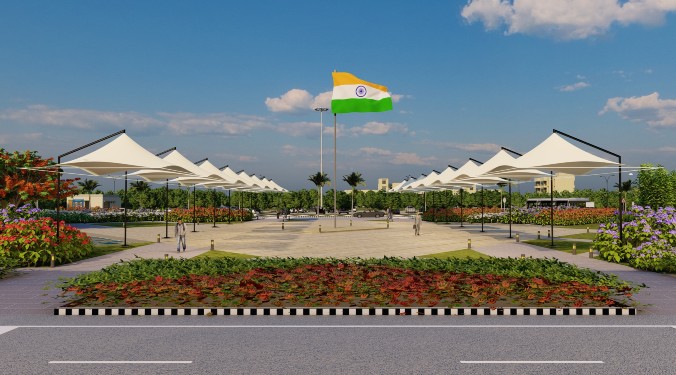“Danfoss sees opportunity to help improve automation levels that help in both energy efficiency and improvement in plant productivity,” says Kamal Singh, Vice President, Power Electronics Division, Danfoss India
HVAC industry and infrastructure segment share a symbiotic relationship. With new policies and investment, both are vying for a solid presence in future. In a conversation with ACE Update, Kamal Singh shares how Danfoss is going to tap the opportunities.
Indian and HVAC segmentIncreasing urbanisation coupled with the government’s thrust on “Make in India” to position India as a global manufacturing hub has definitely expanded the scope for infrastructure development. Statistics today say that about 70 per cent of the infrastructure that India needs has still not been constructed. As per estimates, by 2030, there will be about 10 billion square meters of constructed homes, hospitals and other buildings. In fact, according to a study by US Department of Energy, the country doubled its floor space between 2001 and 2005 and is expected to add 35 billion sq. metres of new buildings by 2050.
HVAC industry and infrastructure segment share a symbiotic relationship. Currently, there is a sense of optimism in this space mainly owing to the huge rise in construction activity in the real estate market. The Indian heating, ventilation and air conditioning (HVAC) market is expected to grow by 30 per cent to over Rs. 20,000 crore over the next 2 years, mainly due to increase in construction activity in infrastructure and real estate sectors. According to industry reports, HVAC sector has grown to over Rs. 10,000 crore between 2005 and 2010 and reached Rs. 15,000 crore in FY14.
More so, with the smart cities initiative of the government, construction and infrastructure industry will have to play a prominent role. Opportunities for HVAC sector in India is only to grow with these initiatives. However, what is important is that this demand is met by sustainable solutions.
Adding value to Danfoss is in the business of optimising energy consumption (more from less) and minimising impact on climate. As a company, Danfoss propagates strong awareness on energy efficiency and the use of energy-efficient products. It engineers solutions for optimal heating and cooling with minimal consumption of energy thereby contributing to its customers’ operational profitability. Energy consumption in buildings is growing at 8 per cent annually and in commercial buildings 70 per cent of energy usage and 63 per cent of greenhouse gas emissions are estimated to be contributable to heating, cooling and ventilation.
Given that India is the third-largest energy consumer in the world, and its energy demand is expected to grow more than fourfold over the coming decades. Given the rapid urbanisation in the country, energy consumption and supply is on the rise in linewith India’s economic development, and in 2012 reached 788 million tonnes of oil-equivalent (Mtoe) and 512 Mtoe respectively.
HVAC-R takes a major share of electricity bills for residential, commercial and industrial applications, which will lead to tremendous pressure on energy sources. This can be eliminated by deploying energy-efficient measures that reduce the operational cost. This is where Danfoss plays a role. With fluctuations in power supply becoming a recurring activity, it is a safer to bet on energy efficiency as an alternate fuel.
Danfoss sees huge opportunities in hospitality, pharma and hospital sector. It also has solutions for commercial establishments including IT sector like data centres, which are energy efficient and use climate-friendly refrigerants.
Additionally, infrastructure is being created for clean air for which one needs equipment which can deliver the most energy-efficient output to achieve these goals. Danfoss is currently witnessing a huge demand in the air-conditioning segment, which is bound to increase in the near future.
X-FactorsSome of the factors that govern the HVAC market include rise in population, rapid urbanisation and the subsequent need for infrastructure development. With more people moving into the cities, increasing industrialisation and change in food consumption pattern, every industry from manufacturing to processing and last mile delivery promise for consumer satisfaction will dictate the future of the segment. Allied industries — such as the growing healthcare and pharma sectors which need to cater to the burgeoning demographic’s health needs and the transportation sector which has to meet their mobility requirements — all of these factors will influence the HVAC segment growth prospects.
Danfoss and present marketDanfoss provides sustainable HVAC solutions that enable optimised performance and help customers make significant energy savings. This value proposition helps us position ourselves as the preferred energy solutions provider across varied industries. Its domain expertise and sector specific knowledge capital curated over 8 decades of global experience has positively influenced and directed our approach to meet local needs of customers. Danfoss India’s 2015 growth strategy will focus on 3 key megatrends (cold chain, urbanization and energy efficiency) and looks at increasing the base business and penetration into Tier-2 cities. Within India, Danfoss is actively spreading its reach through the “Reach Out Programme” which aims at catering to the demand from smaller markets in India. This will essentially include markets in white spaces which Danfoss is seeking to cover in India and will enable the company to get closer to the end customers.
Given its long-term vision in the country and the understanding it received of learning gaps among key stakeholders, Danfoss also sets up a refrigeration and air-conditioning learning centre. With its focus on skilling future manpower, it has tied up with various universities to set up student labs like advanced drives laboratories and also encourage young student innovators through the annual Danfoss Innovator Awards.
Danfoss and competitorsAutomated energy optimisation application is its core expertise. It has a hug range of energy-efficient technology, such as scroll compressors, turbocor compressors, VLT HVAC drive family and CKL substations for district cooling which Danfoss offers for hotels, data centres, airports, commercial buildings, pharma, railway and metros. These essentially provide significant percentage of energy savings compared to competitor’s technology hence making Danfoss the preferred choice. Moreover, the expertise that it comes with also makes it a differentiator. With its strong focus on innovation, it offers solutions that are space saving like the VLT drive which controls the speed of the motor based on the load.
Danfoss sees opportunity to help improve automation levels that help in both energy efficiency and improvement in plant productivity – through its valves, drives, compressors, and electronic controllers and support the industry on improved safety standards through products offerings that reduce leaks and training stakeholders on best practices. Due to awareness about high-energy usage, customers are now slowly shifting to frequency controllers as it is one of the best ways to bring in energy efficiency.
11
Cookie Consent
We use cookies to personalize your experience. By continuing to visit this website you agree to our Terms & Conditions, Privacy Policy and Cookie Policy.









